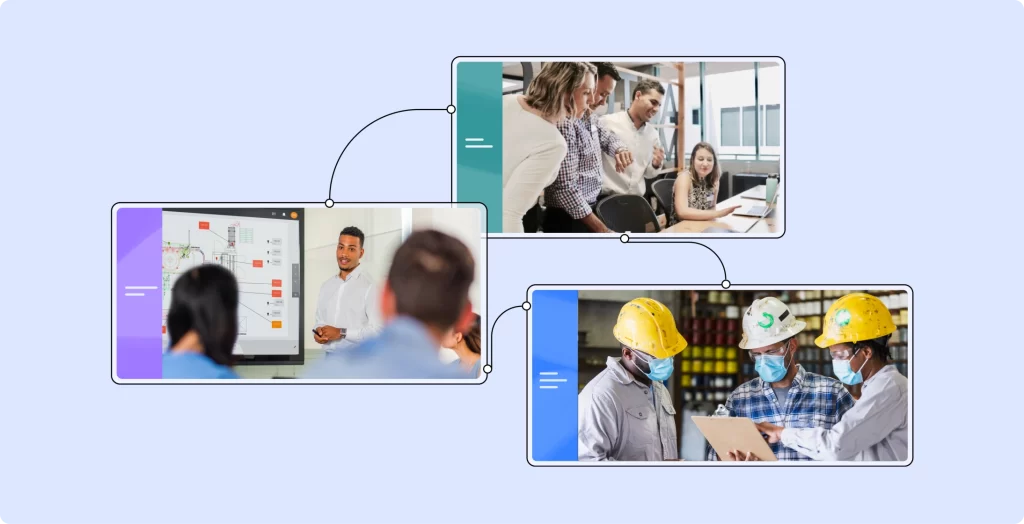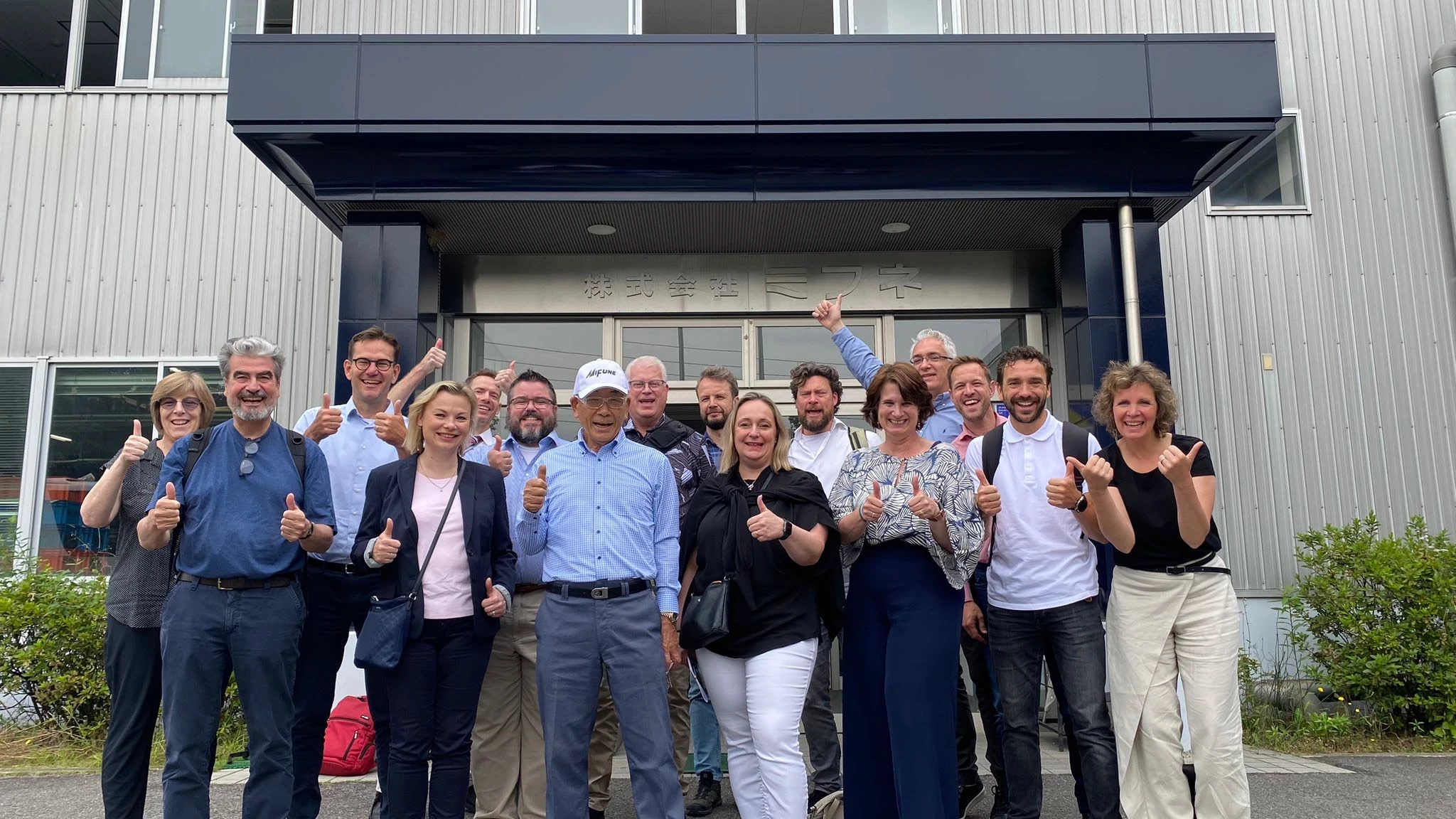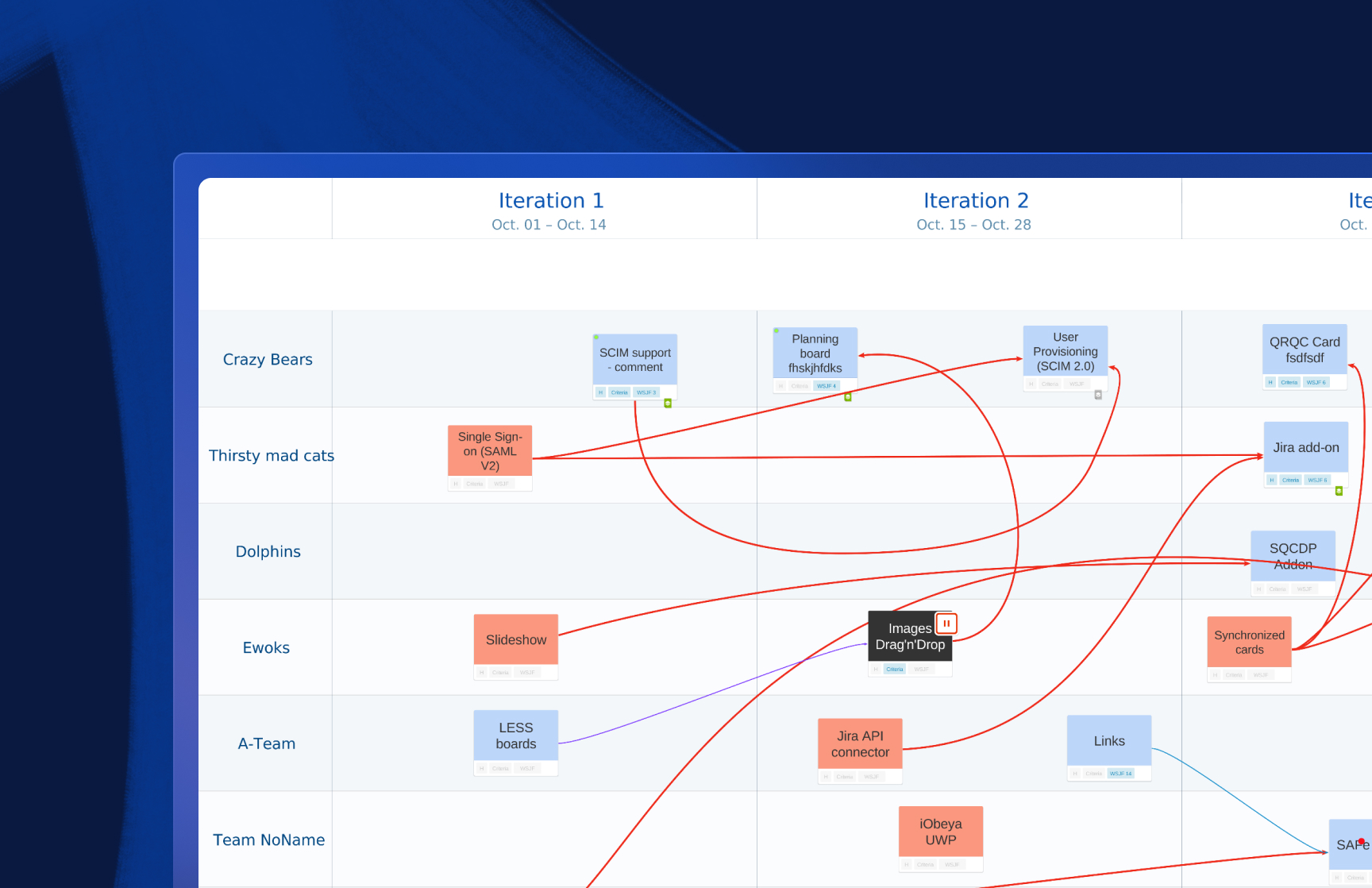Hey, let’s start your
iObeya journey!
In this article, we will delve into the world of “Gemba Walks” to understand how this practice can significantly contribute to transforming the organizational culture of a company while refining its operational processes.
“Gemba Walks” encourage us to step out of the offices and venture into the field, where real work takes place.
Toyota: Walking Towards Operational Excellence
Gemba walks originated in the Toyota Production System (TPS) , which is renowned for its focus on continuous improvement, waste reduction , and quality. The concept of Gemba walks emerged as part of Toyota’s philosophy and practices for achieving operational excellence. Taiichi Ohno, one of the key architects of the Toyota Production System, is often credited with popularizing the concept of Gemba walks. Ohno was a senior executive at Toyota and played a significant role in revolutionizing the company’s manufacturing processes. He emphasized the importance of going to the actual workplace, the Gemba, to gain a firsthand understanding of the work processes and identify improvement opportunities.
The term “Gemba” originates from the Japanese words “gen” (現), meaning “actual” or “real”, and “ba” (場), meaning “place” or “site”. Thus, Gemba refers to the location where value is created, whether it be on the factory shop floor, in healthcare facilities, offices, or any other work environment. The purpose of Gemba Walks is to engage with employees on the Gemba, observe operations, and gain an understanding of work processes, challenges, and opportunities for improvement. By physically being present on the Gemba, leaders and managers can grasp the true nature of work, visualize the flow of resources and information, and have meaningful interactions with employees.
Toyota used Gemba walks as a key component of it’s Kaizen methodology for continuous improvement. The emphasis on direct observation, active engagement with employees, and problem-solving on the Gemba has helped Toyota in pinpointing wasteful practices, eliminating inefficiencies, and continually enhancing their production processes.
Benefits and Strategic Impact of Gemba Walks
Gathering Crucial Insights and Making data-driven decisions
The primary purpose of a Gemba walk is to gather information and gain insights to make data-driven decisions through direct observation of workplace activities, processes, and interactions. This immersive experience at the heart of real work provides a profound understanding of processes and the day-to-day challenges faced by employees. Leaders focus on operations, gaining the ability to visualize resource flow, equipment utilization, communication methods, and other essential aspects.
Promoting Collaboration and Nurturing an Open Environment
When leaders actively engage on the Gemba, it fosters a culture of open communication within the organization. This approach encourages employees to share their ideas and concerns, reinforcing trust and collaboration between leadership and staff. Leaders readily initiate problem-solving discussions right on the shop floor and invite operational teams to participate in problem identification and management. This collaborative approach empowers employees with a sense of responsibility, enabling them to actively contribute to continuous improvement efforts.
Cultivating a Culture of Continuous Improvement and Problem Resolution
Gemba walks play a pivotal role in establishing a culture of continuous improvement and problem resolution within the organization. This practice involves identifying the root causes of problems and inefficiencies. By observing processes and engaging in dialogues with employees, leaders can ask probing questions to unearth the underlying issues. This in-depth analysis facilitates the development of effective, targeted solutions, moving beyond merely addressing symptoms.
Detecting Waste
Gemba Walks, also provide the opportunity to uncover wasteful practices in daily operations. They enable the identification of waste such as overproduction, defects, waiting, unnecessary transportation, and excess inventory. By observing processes directly, leaders can distinguish between waste value-added and non-value-added activities. They can pinpoint areas of waste that might go unnoticed if they relied only on reports or an overview. The information gathered during these walks insight helps in eliminating waste and streamlining processes to improve efficiency and reduce costs.
The Practice of Gemba Walks Among Industry Leaders
Gemba Walks have been successfully implemented by several well-known companies. Here are some examples of prestigious companies that have incorporated Gemba walks into their management practices.
Amazon
Recognized for its commitment to customer experience and operational efficiency, Amazon has integrated a variation of Gemba walks into its management approach. Indeed, Amazon’s leaders are encouraged to spend time within the customer service department to gather insights into the customer satisfaction process, observe warehouse operations, and identify opportunities for enhancement.
General Electric
General Electric has embraced the principles of Lean management and employs Gemba walks to improve operational performance. Executives at General Electric actively participate in Gemba walks to observe processes, interact with employees, and identify areas for process optimization and waste reduction.
Boeing
As an aerospace company, Boeing acknowledges the significance of Gemba walks in ensuring safety, quality, and efficiency in its manufacturing processes. Boeing’s executives and managers conduct Gemba walks to observe aircraft assembly, identify potential issues, and engage with employees to drive continuous improvement.
Starbucks
In the service industry, Starbucks integrates Gemba walks to uphold the quality of its coffee and enhance the customer experience. Executives conduct Gemba walks to observe store operations, engage with baristas, and identify opportunities for improving customer service.
John Deere
As a renowned manufacturer of agricultural and construction equipment, John Deere incorporates Gemba walks into its Lean management practices. Gemba walks are conducted to observe manufacturing processes, identify bottlenecks, and collaborate with employees to stimulate improvements in quality, productivity, and safety.
These are just a few examples of companies that have integrated Gemba walks into their management practices. Gemba walks have proven to be effective in various industries and are implemented by organizations that strive for continuous improvement, employee engagement, and operational excellence.
Gemba walks: a universal approach for all organizations
Gemba walks can be applied to any industry or work environment where value is created. Regardless of the industry, the underlying principle of Gemba walks remains the same: going to the work area, observing operations, engaging with employees, and gaining a firsthand understanding of the work processes. Here are a few examples of how Gemba walks can be applied in different industries:
-
Healthcare Industry
In hospitals and healthcare facilities, Gemba walks can be conducted in patient care areas, operating rooms, emergency departments, or administrative offices. Leaders can observe patient flow, identify bottlenecks, address safety concerns, and engage with healthcare professionals to improve processes and enhance the patient experience.
-
Service-Oriented Industries
In industries such as hospitality, retail, or banking, Gemba walks can be conducted in customer service areas, front desks, or call centers. Leaders can observe customer interactions, service delivery processes, and employee performance, leading to improvements in customer satisfaction, service efficiency, and employee engagement.
-
Office Settings
Gemba walks can be applied in office settings to observe workflow, information flow, and collaboration patterns. Leaders can identify communication gaps, remove unnecessary bureaucracy, optimize document handling processes, and foster a more efficient and productive work environment.
-
Construction industry
In construction sites, Gemba walks can be used to assess safety protocols, identify potential hazards, and improve construction processes. Leaders can observe the workflow, materials handling, and equipment usage, ensuring compliance with standards, reducing waste, and enhancing project efficiency.
Overcoming Challenges and Achieving Sustainable Improvements
To ensure the effectiveness of Gemba walks, it is imperative that they are integrated into a broader organizational transformation approach. This requires leaders to have a deep understanding of Lean principles and strong problem-solving and observation skills. Without this strong foundation, leaders may find it challenging to extract meaningful insights from Gemba walks.
It is crucial to acknowledge that most of the criticism directed at Gemba walks can be overcome by setting clear objectives and integrating these walks into a continuous improvement initiative aimed at fostering positive change and strengthening operational excellence. Among the criticisms of Gemba walks, several points deserve attention:
- Gemba walks can be time-consuming, especially for executives or managers with multiple responsibilities and limited availability.
- They may have a limited scope, primarily focusing on the immediate work area or observed processes during the walk. This narrow focus might lead some managers to overlook more systemic issues within the organization and fail to address organizational challenges that require a broader approach.
- Gemba walks do not always guarantee an accurate representation of daily operations. Employees may be inclined to alter their behavior or present an idealized version of their work during observations, resulting in a distorted or incomplete picture of actual work processes and challenges.
- Lastly, if Gemba walks are not integrated into a broader framework of continuous improvement with a structured approach to capturing and addressing identified issues, they can become sporadic or lose their effectiveness over time. The impact may be short-lived, and the organization may not realize long-term benefits.
6 Tips for Effective Gemba Walks
To maximize the benefits of this practice, it is essential for leaders to adopt an appropriate approach. Here are some tips for leaders and managers during their Gemba walks:
Active Presence and Non-Invasive Observation: During Gemba walks, leaders and managers should strive to be present in the workplace without interrupting or interfering. A discreet presence allows for a true understanding of the reality on the ground.
Use of Open-Ended Questions: It is recommended to encourage employees to share their ideas and experiences by asking open-ended questions. Avoid closed-ended questions that only allow for simple answers, and instead, prioritize questions that foster in-depth conversations.
Active and Empathetic Listening: When employees share their challenges and concerns, leaders and managers should listen attentively and empathetically. The goal is to understand their perspective and the obstacles they face.
Note-Taking and Documentation: It is essential to take detailed notes and document observations during Gemba walks. This information will be valuable for later analysis and for tracking identified issues.
Encouragement of Participation: Leaders and managers should promote active employee participation. Respect their expertise and ideas, and encourage them to contribute to discussions about potential improvements.
Rigorous Follow-Up: Once issues have been identified, it is important to ensure their resolution and the progress of improvement initiatives. Keeping employees informed of developments and recognizing their efforts is a key element of this process.
By following these guidelines, leaders and managers can make the most of Gemba walks, enhance employee engagement, and foster a culture of continuous improvement within their organization.
Over time, the practice of Gemba walks has been adopted and adapted by organizations around the world, not only in manufacturing but also in various industries and sectors. Gemba walks have become a recognized practice for leaders and managers to gain firsthand knowledge, foster employee engagement, and drive continuous improvement efforts.
Today, Gemba walks are considered an essential Lean management practice and are widely used as a means to bridge the gap between management and the frontlines, improve communication, and create a culture of continuous improvement in organizations.







